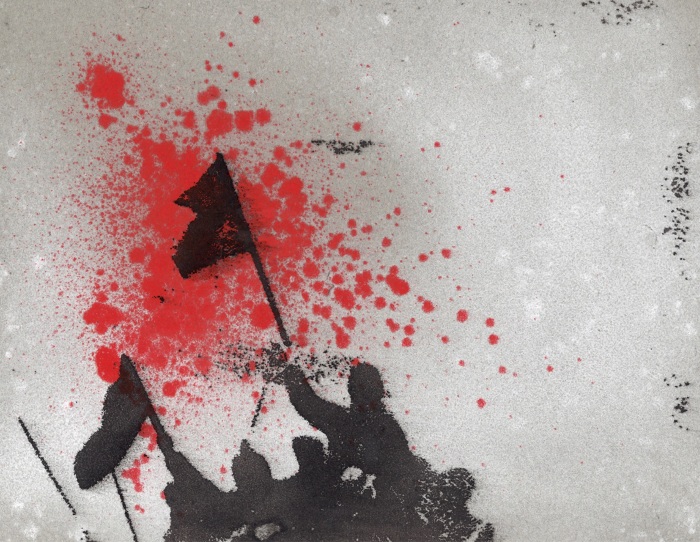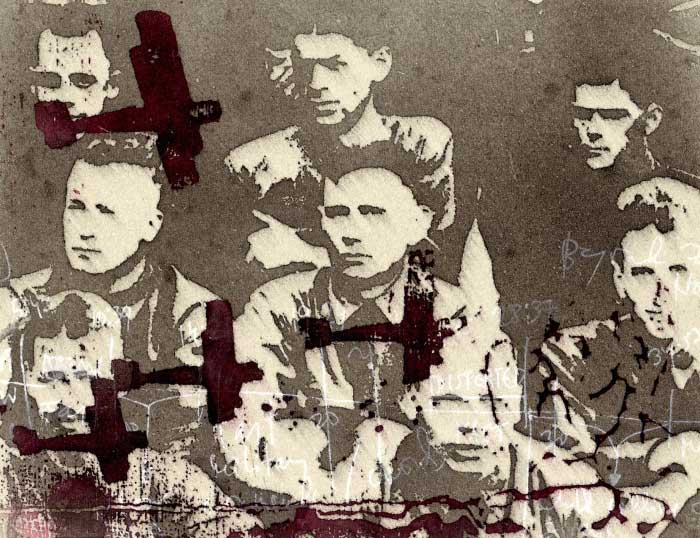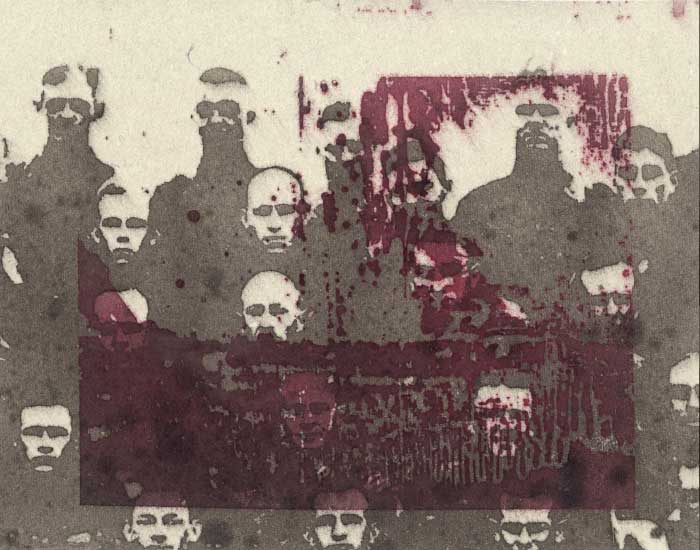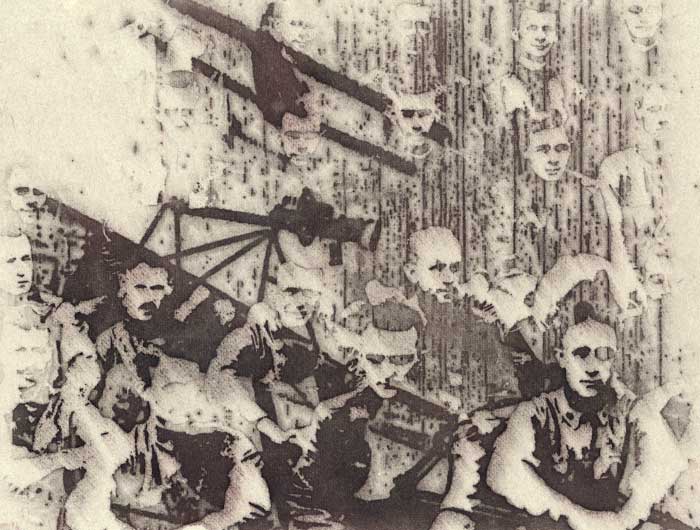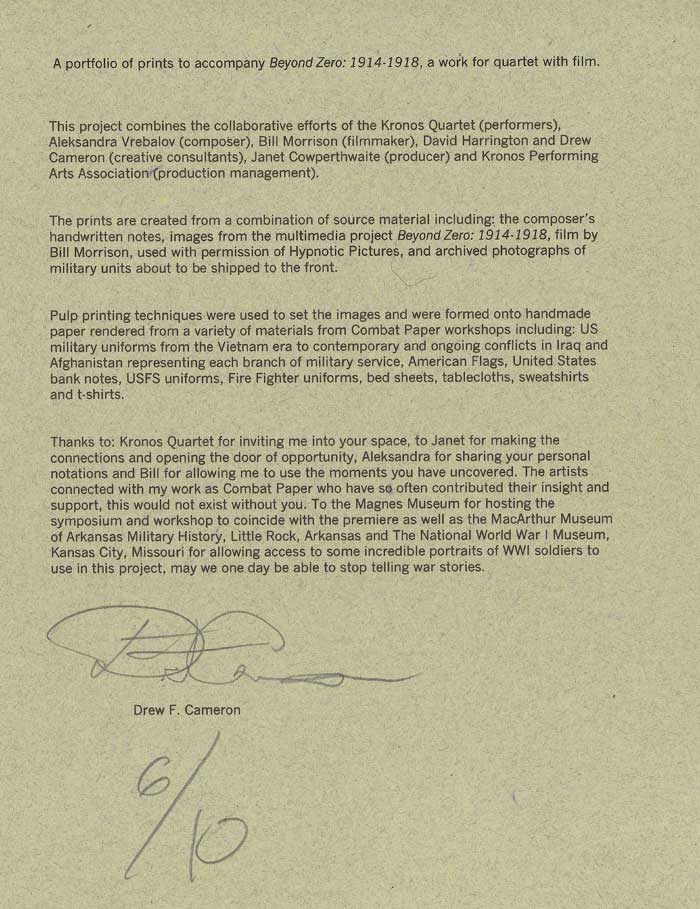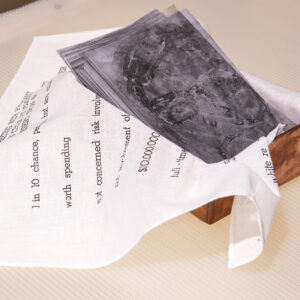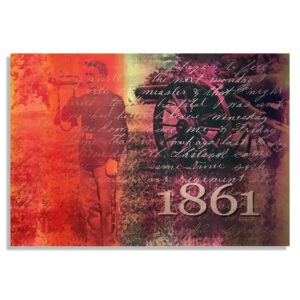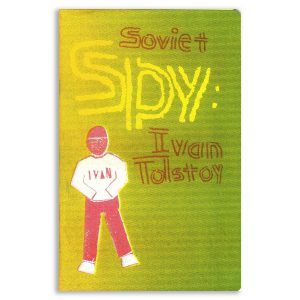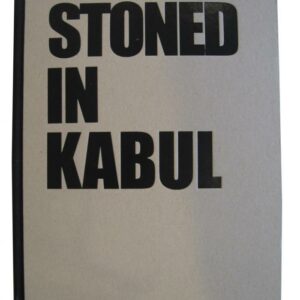- You cannot add "Afghanistan: Perils of Freedom" to the cart because the product is out of stock.
Beyond Zero: 1914–1918
Beyond Zero: 1914–1918
Date
2014
Edition Size
10
Media
Pulp Printing
Format
Artist Book
Dimensions
11 × 14 in
Collection
Collection Development, Limited Edition Artists Books$ 6,800.00
Unavailable
View Collectors
Reed College
Stanford University
Wesleyan University, Olin Library
This project combines the collaborative efforts of the Kronos Quartet, Aleksandra Vrebalov (composer), Bill Morrison (filmmaker), David Harrington and Drew Cameron, Janet Cowperthwaite (producer), and Kronos Performing Arts Association.
The prints are created from a combination of source material including: the composer’s handwritten notes, images from the multimedia project Beyond Zero: 1914–18, film by Bill Morrison, used with permission of Hypnotic Pictures, and archived photographs of military units in World War I about to be shipped to the front line.
Pulp printing techniques were used to set the images and were formed into handmade paper rendered from a variety of materials from Combat Paper workshops including: U.S. military uniforms from the Vietnam era to contemporary and ongoing conflicts in Iraq and Afghanistan representing each branch of the military service, American Flags, U.S. bank notes, USFS uniforms, Fire Fighter uniforms, bedsheets, table cloths, sweat & t-shirts.
Thanks to: Kronos Quartet for inviting me into your space, to Janet for making the connections and opening the door of opportunity, Aleksandra for sharing your personal notations and Bill for allowing me to use the moments that you have covered. The artists connected with my work as Combat Paper who have so often contributed their insight and support, this would not exist without you. To the Magnes Museum for hosting the symposium and workshop to coincide with the premiere as well as the MacArthur Museum of Arkansas Military History, Little Rock, Arkansas, and The National World War I Museum, Kansas City, Missouri for allowing access to some incredible portraits of WWI soldiers to use in this project, maybe we one day be able to stop telling war stories.
— Drew Cameron, 2014
Pulp stencil print on handmade paper from military uniforms, US flags, US currency,
cotton bedsheets, tablecloths, t-shirts, and sweatshirts.
Kronos Quartet Beyond Zero: 1914-1918
A work for quartet with film
Aleksandra Vrebalov, composer
Bill Morrison, filmmaker
David Harrington and Drew Cameron, creative consultants
Janet Cowperthwaite, producer
Kronos Performing Arts Association, production management
About Beyond Zero: 1914–1918
“Unlike official histories, that have often romanticized and glorified the war, artists have typically been the keepers of sanity, showing its brutality, destruction, and ugliness. For many, across history, creating art in those circumstances served as a survival mechanism.
While working on Beyond Zero: 1914–1918, I was inspired by anti-war writings, music, and art created during and immediately after World War I, including, for example, the writings of Wilfred Owen and Siegfried Sassoon, the music of Satie and Debussy, and the Dada movement. The piece draws from their disillusionment about heroism and patriotism, summed up in Owen’s line from Dulce et Decorum, that to die for one’s country is the old lie.
Throughout the piece, there are several documentary recordings from different wars – from the horrific “Loyalty Speech” of James Watson Gerard who served as a U.S. Ambassador to Germany until 1917, to military commands of Serbian and Bosnian troupes during the conflicts that led to the brutal falling apart of Yugoslavia in 1990s, to the chilling sound of air-raid sirens during the bombing of London in World War II.
My intention was to juxtapose these historical accounts of war with the finest expressions of spirit and creativity occurring at the same time – therefore Béla Bartók’s own playing of his Piano Suite written in 1916, and Huelsenbeck’s reading of his Chorus Sanctus, also written in 1916. A girl calling her cats is a symbolic reminder of suffering of women and children, and of longing for lost safety and domesticity. Beyond Zero: 1914–1918 ends with fragments of a dark Byzantine hymn Eternal Memory to the Virtuous, chanted by the monks from the Kovilj monastery in Serbia, in remembrance to all who lost their lives in the Great War and every war since then.”
– Aleksandra Vrebalov
“The film portion of Beyond Zero: 1914–1918 is comprised of films that have never been seen by modern audiences. I searched archives for rare 35mm nitrate films shot during the Great War, and made new brand new HD scans from the originals. In many cases this is the last expression of these films – some original copies were determined to not be worth preserving beyond this transfer to digital media.
What we are left with is a glimpse of a war fought in fields, in trenches, and in the air. Most of the footage shows some emulsion deterioration – the by-product of a history stored on an unstable base for 100 years. Through a veil of physical degradation and original film dyes, we see training exercises, parades, and troop movement. Some of the battle footage was re-enacted for the camera, and some depicts actual live rounds. All of it was shot on film at the time of the conflict.
We see a record of a war as a series of documents passed along to us like a message in a bottle. None is more powerful than the record of the film itself, made visible by its own deterioration. We are constantly reminded of its materiality: this film was out on these same fields with these soldiers 100 years ago, a collaborator, and a survivor. It is being seen now as a digital image for the first time.
If these are images that we, as viewers, were once intended to see, to convince us of the necessity and valor of war, they now read as images that have fought to remain on the screen. They are threatened on all sides by the unstable nitrate base they were recorded on, and the prism of nearly one hundred uninterrupted years of war, through which we now view them.”
– Bill Morrison

